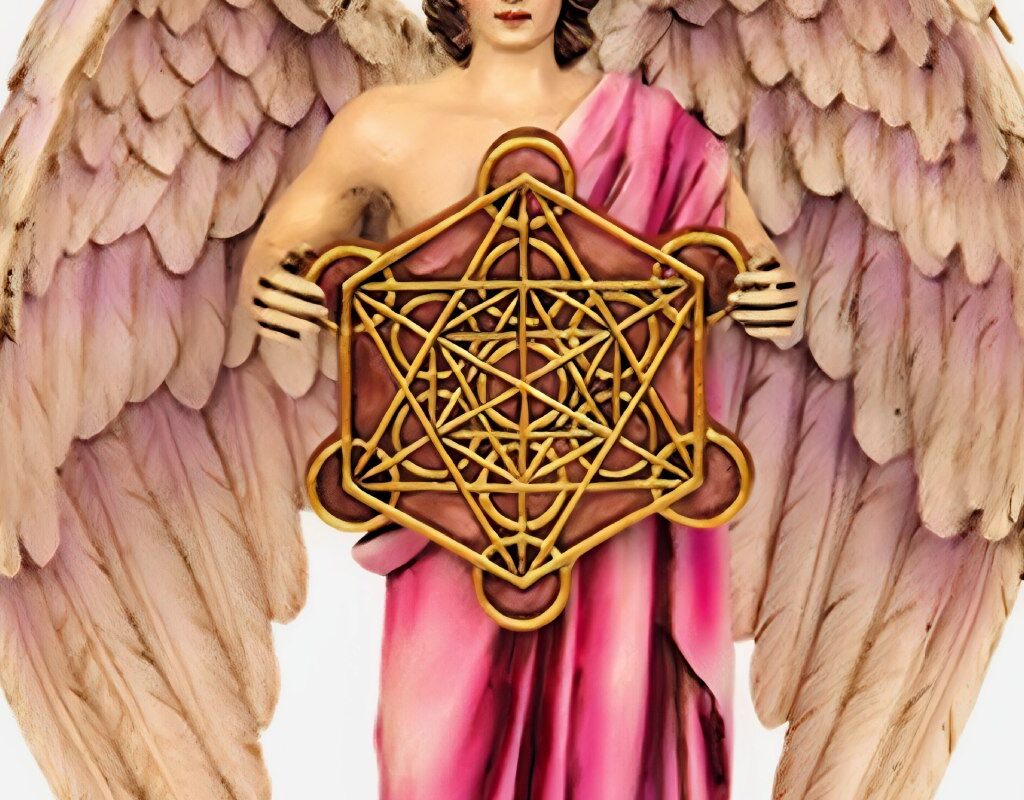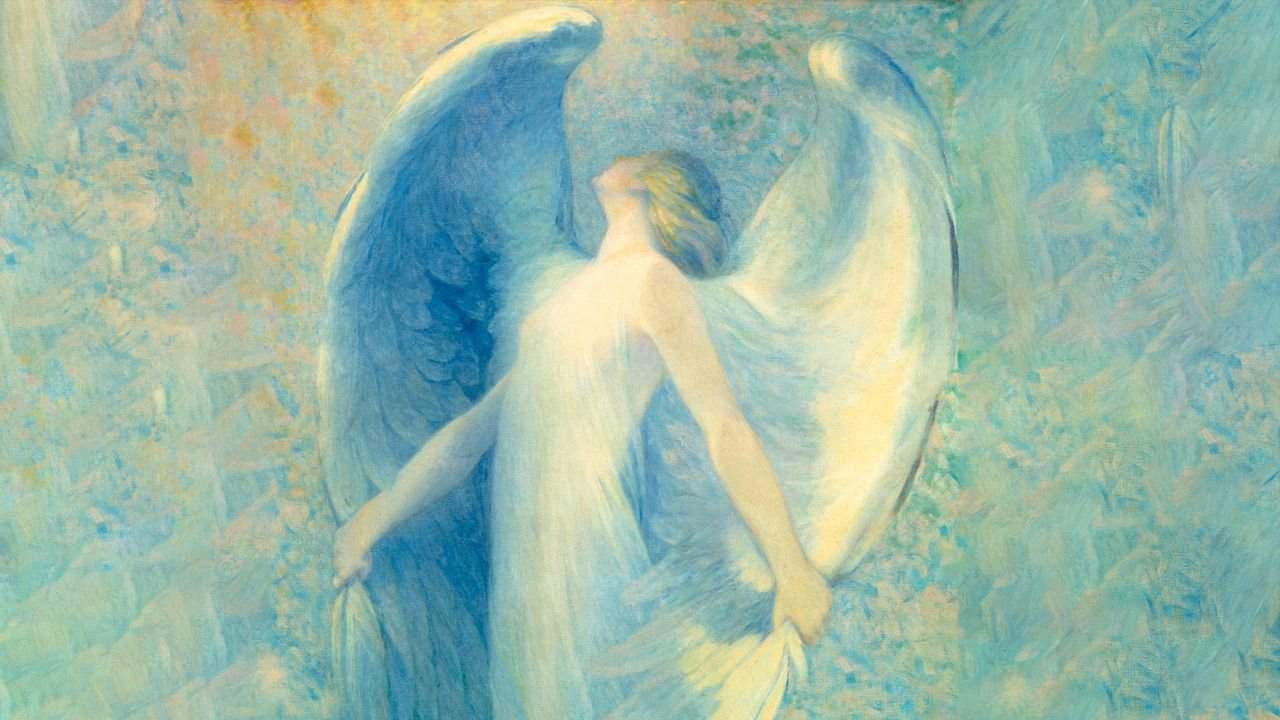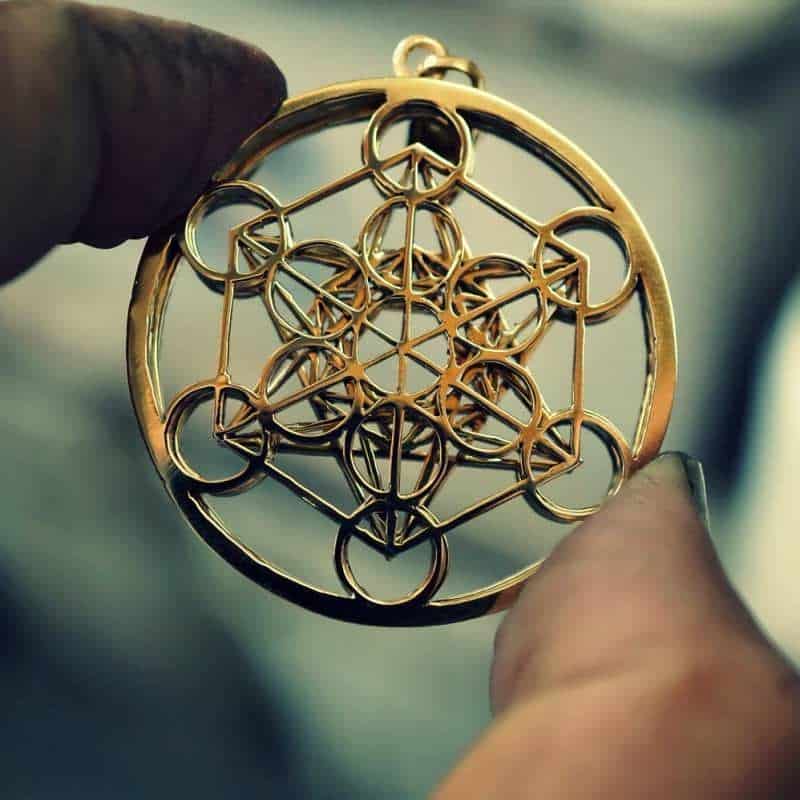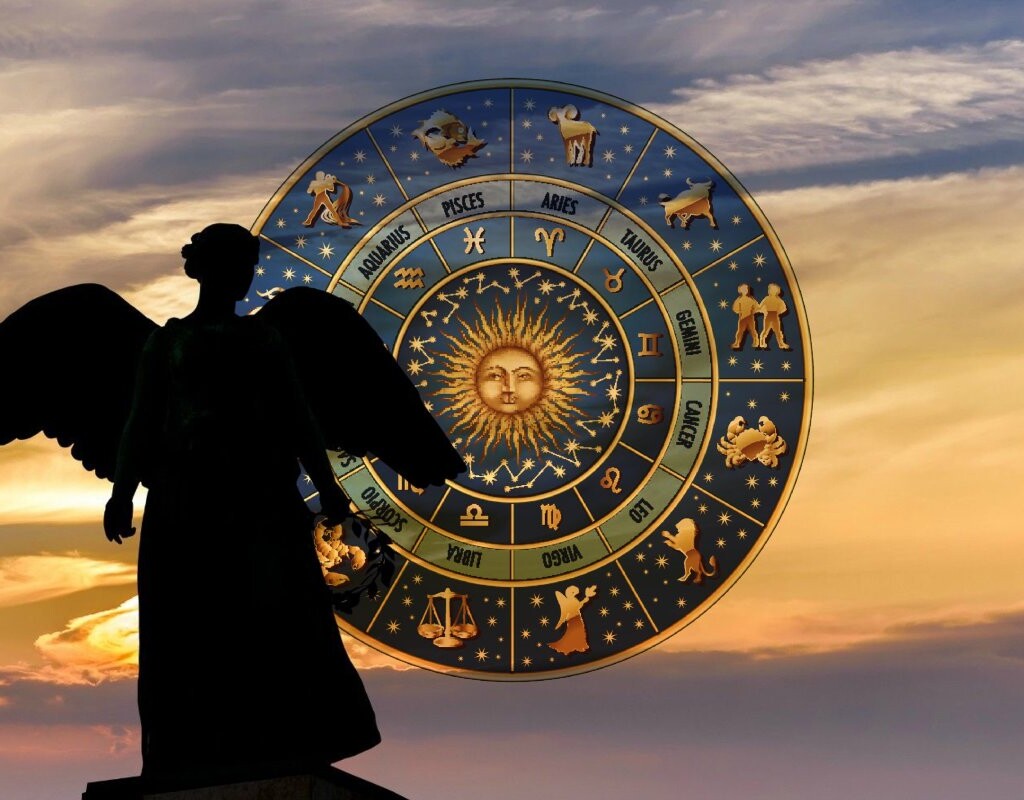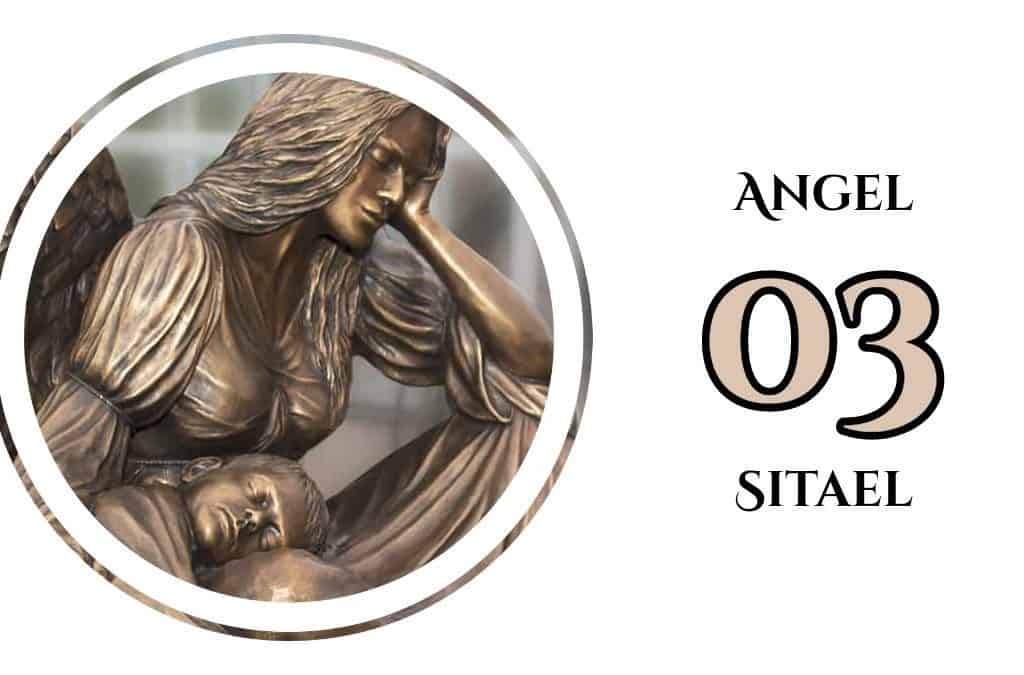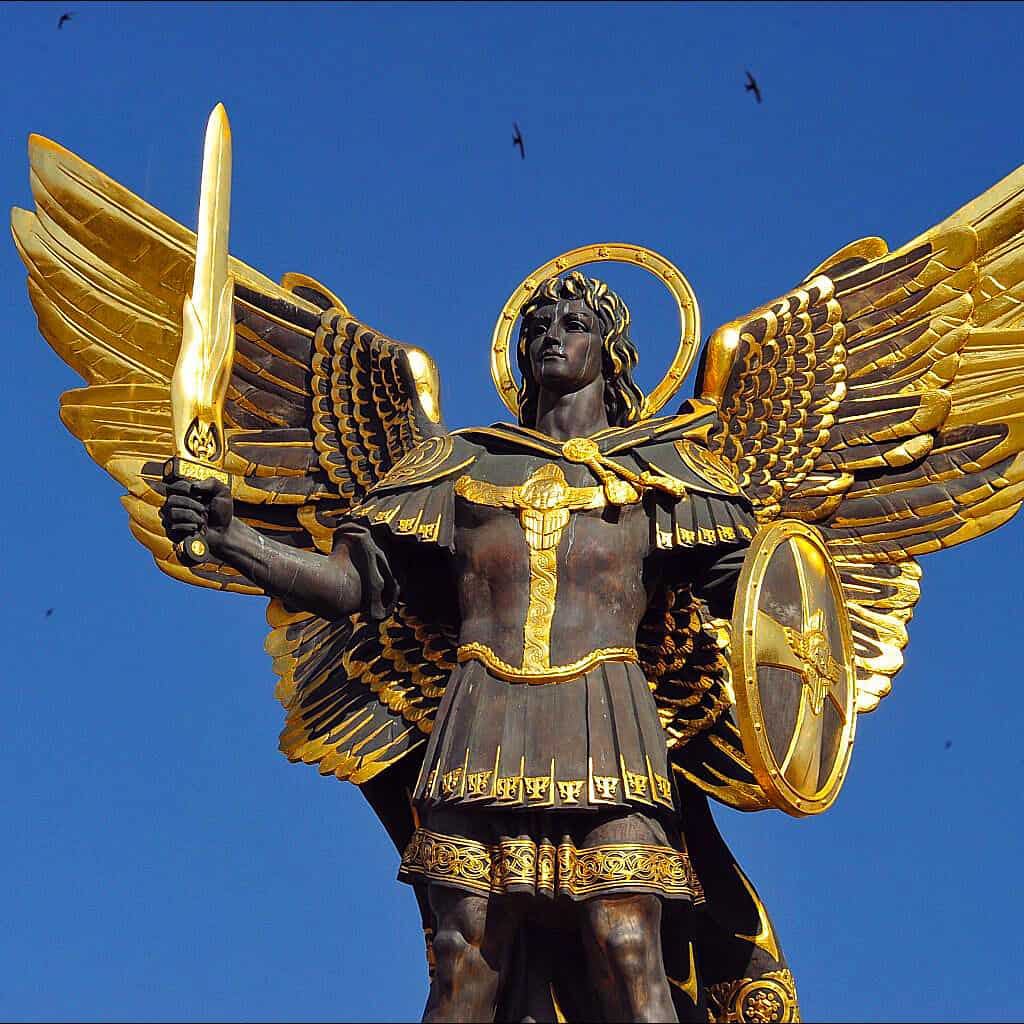Metatron emerges as a singular angelic figure in the traditions of Judaism and certain strands of Christianity, despite the lack of direct mentions in the biblical sacred texts. Also known under various variants of his name such as Mattatron, Metraton, and Metator, this celestial being is notable for his uniqueness.
Metatron: The Archangel Beyond the Biblical Veil
Celestial Enigmas: The Duality and Human Origin of Metatron
Strikingly different from other archangels, whose names end with the suffix ‘EL’ — symbolizing their connection to God — Metatron lacks this hallmark.
According to interpretations, this is due to his human origin; one of only two beings who, after living as mortals, were exalted to the angelic condition by divine will.
A stream of Jewish doctrine holds that Enoch, taken by YHWH or Yahweh, was transformed into Metatron.
However, this view is not unanimously accepted among Talmudic authorities. Some theological discussions suggest the existence of two distinct entities under the name of Metatron: one seven-letter version and another with six.
The seven-letter Metatron is considered the original, whom one of the apocryphal texts attributed to Enoch calls the “Lesser YHWH.” On the other hand, the six-letter Metatron would be the angelic form assumed by Enoch.
While the original Metatron serves as the divine scribe, the second, in the Kabbalistic tradition and as cited in the Book of Zohar as ‘Metatron the Youth,’ is identified with the luminous being who led the people of Israel through the desert following their exodus from Egypt.
Another interpretation suggests that Metraton represents the ‘masculine’ facet of the Shekinah, considered the Glory of God and, for some, the feminine aspect of the divinity, reminiscent of those ancient mythological narratives where the god of the sky unites with the goddess of the earth.
In this view, Metatron and Shekinah juxtapose in a cosmic balance, reflecting the divine duality prior to the monotheistic conception of a single God.
The Shekinah: Abode and Divine Breath
The Shekinah is understood as the dwelling place of God — whether in the temple, heaven, or manifesting as divine inspiration.
In Christianity, the Trinity comprises the Father, the Son, and the Holy Spirit, masculine figures symbolizing different aspects of the same divinity. This concept parallels ancient mythologies where triads of deities were venerated, often with a feminine focus.
These pagan mythologies typically represented the father, the mother, and the son or daughter. In this context, the Christian Holy Spirit might be interpreted as a masculine transformation of the ancestral Shekinah, regarded as the divine mother.
The origins of this association between Metatron and the Shekinah trace back to Talmudic traditions. It is recounted that Elisha Ben Abuya, who supposedly had entered Paradise, observed Metatron occupying a seat reserved only for Yahweh.
The Feminine Nuance of Divinity: Shekinah and Her Parallelism with the Holy Spirit
Metatron and Shekinah: Exploring the Intersection of Masculine and Feminine in Spirituality
Faced with this vision, Elisha Ben Abuya concluded that there were two deities in heaven. However, rabbinic scholars clarified that Metatron acted as a celestial secretary, tasked with documenting the actions of Israel, and hence was permitted to sit beside God — an interpretation subject to individual believers’ view.
Another explanation suggests that the name “Metatron” derives from Hebrew, meaning “Guardian of the Entrance” or “He Who Stands Behind the Throne.”
In contrast, writer Robert Graves proposes a Greek origin for the term, suggesting a more recent incorporation, likely in the era of the New Testament or afterward.
According to Graves, “Metatron” might be a Hebrew adaptation of the Greek phrase “meta ton thronón” (near the throne), while others suggest that in Latin, “metator” translates as messenger or measurer.
This theory is supported by the fact that the most extensive references to Metatron appear in Kabbalistic texts developed between the 12th and 13th centuries.
Metatron: The Great Celestial Scribe and His Prominent Role in the Kabbalah
From the Tree of Life to the Universe: The Influence of Metatron, the King of Angels
Within the mystic paths of the Kabbalah, the figure of Metatron shines with unique distinction, bearing the titles of ‘Chancellor of Heaven’ and ‘Great Scribe of Heaven’.
His primary mission is to write the ‘Book of Life’, a role that grants him the unique privilege of sitting in the immediate presence of God — a privilege denied to any other being. This exceptional position underscores his interpretation as second in the celestial hierarchy.
In his work as a scribe, Metatron serves as a divine intermediary, taking down God’s dictations and then disseminating them among the rest of the angels. This role has earned him reverence as the “King of Angels”.
His influence reaches all the way to the Tree of Life, where he presides from the Sefirot of Keter — the crown and primal thought. From this point, the original spark that generates light unfolds, driving creation. This process is metaphorically likened to the universe’s Big Bang.
Metatron and the Secret of Divine Geometry: The Power of the Protective Cube
Metatron’s Cube: From the fruit of life to the alchemy of the spirit
Metatron is also deeply connected to sacred geometry. Concepts like the tree, the flower, the fruit, and the egg of life all originate from fundamental geometric shapes, all born from an original circle. This circle is replicated and overlapped in sequences to form the mentioned structures.
Metatron’s Cube, a symbol derived from the union of the centers of the thirteen circles that make up the fruit of life, stands out among these figures. The connected lines project four of the five platonic solids. It’s said that Metatron engraved his own soul into this design to bestow it upon humanity.
This cube is not only an emblem of esoteric knowledge but is also considered a sacred glyph of protection.
It’s often used in rituals to surround objects or individuals, shielding them from demonic entities and malevolent forces. Its meaning also extends to the realm of alchemy, where the circle is seen as a containment space or a matrix of creation.

